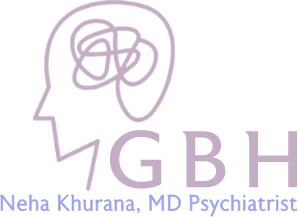
- August 22, 2025
How to Quit Alcohol: Tips to Succeed
Do you feel like your drinking habit has gotten out of control, and maybe it’s time to quit drinking? Quitting alcohol is a courageous and life-changing step that can significantly improve the overall quality of your life. Whether you want to take a break or notice some severe signs of illness, understanding how to quit alcohol safely and effectively is essential.
In this guide, we will walk you through everything you need to know about quitting alcohol. From recognizing the warning signs to connecting with professional help, we will cover it all.
Recognizing the Problem: Signs of Alcoholism
Understanding whether your alcohol consumption has become a serious habit is the first step toward change. Some common signs of alcoholism include:
- Increased alcohol tolerance
- Frequent uncontrollable behaviour after drinking
- Drinking more or longer than intended
- Unsuccessful attempts to cut down or quit
- Neglecting other tasks to drink
- Experiencing cravings at any time during the day
- Hiding drinking habits or feeling shame
These signs can help you identify the severity of the issue and take steps like support and medical guidance to stop alcohol addiction.
One Conversation Can Change Everything! Consult Dr. Neha Khurana for Expert Help in Quitting Alcohol
What is Alcohol Use Disorder (AUD)?
Alcohol use disorder, also known as alcoholism, is a medical condition characterized by the inability to control drinking alcohol despite adverse consequences. Alcohol use disorder can be mild, moderate, or severe, affecting millions of individuals worldwide.
It is not simply a matter of willpower; alcoholism can alter brain chemistry, making it challenging to quit without help. Early recognition of alcohol addiction symptoms can lead to timely intervention and reduce the risk of long-term damage to the body and mind. Alcohol-induced cardiomyopathy, alcohol poisoning, and cerebellar degeneration are some of the potential complications due to this condition.
What Happens to Your Body When You Stop Drinking Alcohol?
To get effective results, it’s necessary to know what will happen to your body when you stop drinking. The benefits of quitting alcohol start almost immediately:
The First 24 Hours
Initial symptoms of alcohol withdrawal generally start within 24 hours after your last drink. These symptoms include headache, tremors, and mild anxiety. While mild at first, they will begin to get more intense as you progress with withdrawal practice.
36-72 Hours
New symptoms that develop after the first 24 hours include clammy skin, nausea, jumpiness, insomnia, depression, and loss of appetite. Seizures are the most dangerous and uncommon symptoms that can also occur at this stage.
3-7 Days
After the first week of quitting alcohol, symptoms will start to subside. They will become less intense, and there will be signs of better physical health.
2 Weeks
Though there will be improvements, during the second week, there will be non-physical symptoms like cravings for alcoholic drinks.
Additional benefits of quitting alcohol include:
- Your liver heals
- Your heart starts getting healthier
- You lose weight
- Improved sleep cycle
- Maintained blood pressure
- Clear thoughts, better decision making
Alcohol Withdrawal: What to Expect?
When regularly heavy and long-term drinkers start quitting alcohol, intense withdrawal symptoms may occur. This is a physiological reaction that can even cause severe medical emergencies. In rare cases, withdrawal symptoms can escalate into alcohol induced psychosis or Delirium Tremens (DTs), a potentially fatal condition requiring immediate medical care. Common alcohol withdrawal symptoms include:
- Anxiety or irritability
- Sweating, nausea, vomiting
- Shaking or tremors
- Insomnia
- Seizures or hallucinations in severe cases
One Conversation Can Change Everything! Consult Dr. Neha Khurana for Expert Help in Quitting Alcohol
Steps to Quit Alcohol
While the journey of quitting alcohol may feel overwhelming, breaking it into manageable steps helps you achieve better results with less discomfort. Below are a few of the key steps to include in your recovery plan and claim control over your life.
Admit the Problem and Seek Support
Acknowledging the issue is the first and crucial step. You’re not alone; millions struggle with alcohol use. Consider support options like:
- Therapy or counseling
- 12-step programs like Alcoholics Anonymous (AA)
- Rehab centers
- Join online communities for accountability
Create a Quitting Plan
Prepare a realistic customized plan that includes an estimated quitting date, a list of your triggers, emergency contacts, a reward system, and coping strategies.
Set Realistic Goals
No matter what stage of drinking you’re at, perfection doesn’t come overnight. Avoid setting unrealistic expectations. Set achievable goals and celebrate when you succeed.
Change Your Environment
School, home, or workplace, bring changes into your environment. Avoid social settings with a high risk of alcohol, and communicate your goals with your friends or family for moral support.
Healthy Lifestyle Changes: Diet, Exercise, Stress Management
Diet and lifestyle changes are a must when quitting alcohol. Support your recovery with a nutritious diet, regular physical activity, meditation, mindfulness, and structured daily routines.
Use of Alcohol Tests to Stay Accountable
You can also get tested for alcohol use (breath, urine, or blood) to get a sense of accountability. This can effectively help during the early stages of sobriety.
Reach Out for Support
Moral support, whether from family, friends, or community groups, is essential. Consider talk therapy, engage in group meetings, and nurture relationships that reinforce your recovery.
Alcohol Addiction Treatment Options
If self-managed efforts aren’t enough, alcohol addiction treatment offers structured and effective paths to sobriety. These programs help with quitting while addressing conditions that are often a result of alcohol addiction, such as liver disease, depression, or cardiovascular problems.
- 24/7 inpatient rehab care & treatment
- Flexible care for patients living at home
- Extra support for co-occurring mental health issues
- Medication-assisted treatment (MAT)
- Cognitive Behavioral Therapy (CBT)
Conclusion
Initiating and learning how to quit alcohol is the first step toward a healthier, happier life. Recovery is never linear, but with consistent efforts, it’s possible and highly rewarding. Whether you’re doing it for yourself or a family member, remember that support, preparation, and consistency are your greatest tools.
FAQs
What happens when you stop drinking alcohol?
You may experience withdrawal symptoms initially, but soon see improved sleep, better digestion, clearer thinking, and more energy.
What happens to your body when you stop drinking?
Your liver begins to heal, blood pressure stabilizes, mental clarity improves, and your immune and digestive systems strengthen.
Which condition is often a result of alcohol addiction?
Common conditions include liver disease, heart problems, depression, and pancreatitis.
How to spot triggers of excessive alcohol consumption?
To spot the trigger, look for patterns, situations, emotions, or people that increase your urge to drink. It can be trauma, work pressure, or other social or personal conditions.
What are the benefits of drinking less?
Better sleep, improved mood, weight control, lower blood pressure, and reduced risk of chronic diseases.
Does the liver heal after quitting drinking?
Yes. The liver can begin healing within weeks of quitting alcohol, especially if the damage isn’t severe.
How long does depression last after quitting drinking?
The depressed stage of quitting alcohol varies, but symptoms often ease within 1–3 weeks. If you notice longer-lasting depression symptoms, you may need professional support.
